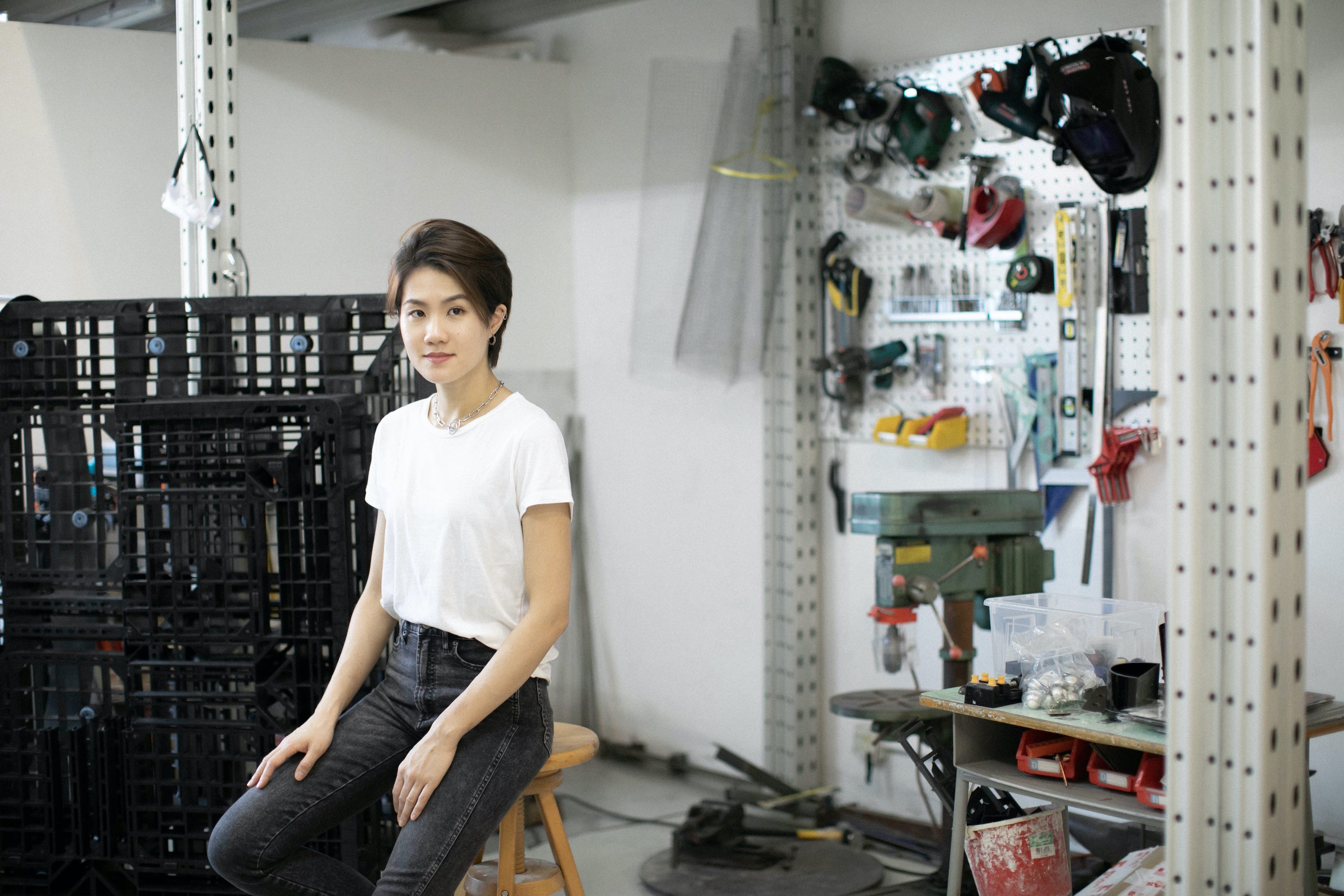
Leelee Chan is an optimist.
The Hong Kong-based artist, who is known for sculptures made from discarded and neglected objects, is riding high after debuting new work at the gloriously in-person Art Basel Hong Kong. She is also the winner of the 2020 BMW Art Journey, a prize that supports young or mid-career artists in creating new work almost anywhere in the world.
Chan’s latest project, “Tokens From Time” is the product of the first leg of her journey through Europe, where she visited artisan families who still practice ancient craft techniques with materials including copper, silver, and marble. Chan also spoke with scientists to understand how these natural materials might be substituted with synthetic ones in the future as concern for the protection of the natural environment grows.
We caught up with Chan at her Hong Kong studio about the best tools for tackling a variety of materials, her optimism when it comes to solving problems, and the artwork she has found to be a balm during the current political turmoil unfolding in Hong Kong.
Leelee Chan Studio. Courtesy of the artist.
What are the most indispensable items in your studio and why?
I think probably my power drill, spatula, sandpaper, and disposable gloves. I use a wide range of materials and techniques depending on the project: from construction material like concrete and stainless steel, to crafting materials like silver, paper clay, as well as conventional sculpture materials likes Jesmonite, plaster, silicone, and resin.
However, those items have become a staple and it feels strange not to have them around. I’m also quite specific about them; I’m building my own collection.
What is the studio task on your agenda tomorrow that you are most looking forward to?
Removing the silicone molds from the casting of resin to make the found tennis court asphalts look like they are floating inside the plastic pallets. I spent the majority of time on the preparation work for casting the resin around those tennis court asphalt pieces. Compared to this, the actual working time of pouring the resin is short.
It took a lot of trial and error to figure this process out, and that is why the moment of removing in the silicone molds to reveal the finished resin is both nerve-wracking and rewarding. Although I follow the exact same process, there is always a chance of failure—one cannot fully control the material.
Leelee Chan Studio. Courtesy of the artist.
What kind of atmosphere do you prefer when you work? Do you listen to music or podcasts, or do you prefer silence? Why?
When I am doing work that requires intense concentration, I’m very specific about the music I am playing in the background and have a low tolerance for noise. It is definitely not the time to get experimental or to let my Spotify suggestions take over.
But when I’m at the stage of brainstorming or doing manual, repetitive work, I like to listen to podcasts or just put music in shuffle mode. Lately, I am more drawn to podcasts, because it is always inspiring to learn from other fields.
What trait do you most admire in a work of art? What trait do you most despise?
Most of all I admire work that is sincere, true to the artist’s experiences, engaging, inventive, and which conveys a sense of vulnerability. The kind of work that makes me want to linger and which opens up an alternative way of seeing the world. I think the work I most despise is usually trendy, unimaginative, and pretentious.
What snack food could your studio not function without?
My afternoon coffee break with something sweet from my local Hong Kong bakery.
Leelee Chan, Hazy Blue Silhouette (2021). Courtesy of the artist and Capsule Shanghai. Photo by South Ho.
When you feel stuck in the studio, what do you do to get un-stuck?
I don’t think I remember the last time I felt truly stuck in the studio. There is always something to do. But when I’m at the stage of brainstorming or trying to find solutions to a problem that needs resolving in my works, I tend to organize my studio or re-visit the materials and drawings from my previous projects. This helps me to open up ideas or simply gives me a little more time to process.
I also find it helpful to talk to my artist friends, as the process of talking about any problem helps me to reflect. Ultimately, I guess I am an optimist—there is always a solution to any problem, it just takes a little longer at times to find it.
Installation view of Leelee Chan’s solo project “Pallet in Repose (Resurfacer)” in Art Basel Hong Kong 2021. Courtesy of the artist and Capsule Shanghai. Photo by South Ho.
What is the last exhibition you saw (virtual or otherwise) that made an impression on you?
Luckily in Hong Kong we can still see exhibitions in person. A few days ago, I saw an exhibition in Tai Kwun called “trust & confusion” curated by Xue Tan and Raimundas Malašauskas. The museum space was transformed into an alternate environment hosting performances and artworks that probed the awareness of my senses and body.
It has been a long time that I found myself fully immersed and moved by an exhibition. It is much needed at this time of coping with the political turmoil and global pandemic in Hong Kong.
If you had to put together a mood board, what would be on it right now?
Images and research snippets on granite stones, silver, and crystals. I have been fantasizing about the Mexico trip of my BMW Art Journey and researching the history of granite stone and the mining industry in Hong Kong for an upcoming exhibition. Stay tuned.